
The United States Secretary of Agriculture is the head of the United States Department of Agriculture. The Secretary of Agriculture is former Georgia Governor Sonny Perdue. Perdue took office on April 25, 2017 after being confirmed by the U.S Senate 87-11. The position carries similar responsibilities to those of agriculture ministers in other governments.

The United States Department of Agriculture (USDA), also known as the Agriculture Department, is the U.S. federal executive department responsible for developing and executing federal laws related to farming, forestry, and food. It aims to meet the needs of farmers and ranchers, promote agricultural trade and production, work to assure food safety, protect natural resources, foster rural communities and end hunger in the United States and internationally.

The Animal and Plant Health Inspection Service (APHIS) is an agency of the United States Department of Agriculture (USDA) based in Riverdale, Maryland responsible for protecting animal health, animal welfare, and plant health. APHIS is the lead agency for collaboration with other agencies to protect U.S. agriculture from invasive pests and diseases. APHIS is the National Plant Protection Authority for the U.S. government, and the agency's head of veterinary services is Chief Veterinary Officer of the United States.

A defoliant is any herbicidal chemical sprayed or dusted on plants to cause their leaves to fall off. Defoliants are widely used for the selective removal of weeds in managing croplands and lawns. Worldwide use of defoliants, along with the development of other herbicides and pesticides, allowed for the Green Revolution, an increase in agricultural production in mid-20th century. Defoliants have also been used in warfare as a means to deprive an enemy of food crops and/or hiding cover, most notably by the United States in the Vietnam War.

The Economic Research Service (ERS) is a component of the United States Department of Agriculture (USDA) and a principal agency of the Federal Statistical System of the United States. It provides information and research on agriculture and economics.
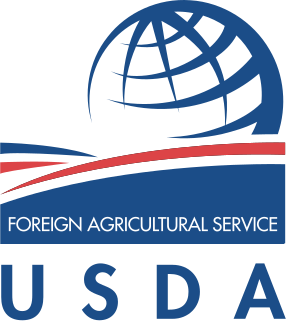
The Foreign Agricultural Service (FAS) is the foreign affairs agency with primary responsibility for the United States Department of Agriculture's (USDA) overseas programs—market development, international trade agreements and negotiations, and the collection of statistics and market information. It also administers the USDA's export credit guarantee and food aid programs and helps increase income and food availability in developing nations by mobilizing expertise for agriculturally led economic growth. In 2003, FAS began to return to a long-abandoned role in national security. The FAS mission statement reads, "Linking U.S. agriculture to the world to enhance export opportunities and global food security", and its motto is "Linking U.S. Agriculture to the World".

The Risk Management Agency (RMA) is an agency of the U.S. Department of Agriculture, which manages the Federal Crop Insurance Corporation (FCIC). The current Acting Administrator is Heather Manzano.

Edward Fred Knipling was an American entomologist, who along with his longtime colleague Raymond C. Bushland, received the 1992 World Food Prize for their collaborative achievements in developing the sterile insect technique for eradicating or suppressing the threat posed by pests to the livestock and crops that contribute to the world's food supply. Knipling's contributions included the parasitoid augmentation technique, insect control methods involving the medication of the hosts, and various models of total insect population management. Knipling was best known as the inventor of the sterile insect technique (SIT), an autocidal theory of total insect population management. The New York Times Magazine proclaimed on January 11, 1970, that "Knipling...has been credited by some scientists as having come up with 'the single most original thought in the 20th century.'"

Suzanne Kreitner Hale is a former United States Ambassador to the Federated States of Micronesia. The United States Senate confirmed Hale on June 25, 2004. She took charge on August 24 and presented her credentials the next day.

The Under Secretary of Agriculture for Farm and Foreign Agricultural Services was the third-ranking official in the United States Department of Agriculture prior to reorganization of several mission areas, announced on May 11, 2017. The mission area of USDA's purpose was to "help to keep America's farmers and ranchers in business as they face the uncertainties of weather and markets..." and that "...deliver[s] commodity, credit, conservation, disaster, and emergency assistance programs that help improve the stability and strength of the agricultural economy." The Under Secretary was traditionally appointed to serve as the President of the Commodity Credit Corporation.
The Under Secretary for Research, Education, and Economics is a high-ranking official within the United States Department of Agriculture that provides leadership and oversight for the Agricultural Research Service, National Institute of Food and Agriculture, Economic Research Service, National Agricultural Library, National Agricultural Statistics Service.
Agriculture in Idaho is an important part of the state's way of life and represents a substantial portion of the state's economy. 20% of Idaho's sales each year are generated by agriculture and food/beverage processing. In 2015, agricultural products were valued at $7,463,718,000, with slightly over half of that from the sale of livestock and dairy products. Cattle is the second largest agriculture sector of the state and Idaho is the third largest producer of milk and cheese in the United States. Although dairy plays a significant role in the economy, Idaho is most known for its potatoes. Idaho is the number one producer of potatoes in the nation and contributes to 32% of the country's production. Idaho has nearly 25,000 farms and ranches spread over 11.8 million acres of land that produces more than 185 different commodities. The state's production ranks in the top ten in the nation in nearly 30 of the commodities it produces.
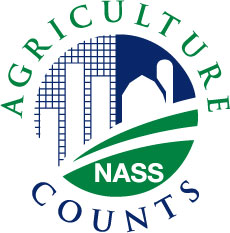
The Census of Agriculture is a census conducted every five years by the U.S. Department of Agriculture’s National Agricultural Statistics Service (NASS) that provides the only source of uniform, comprehensive agricultural data for every county in the United States.
The Agricultural Resource Management Survey is the United States Department of Agriculture’s primary source of information on the financial condition, production practices, resource use, and economic well being of America’s farm households. Sponsored jointly by the Economic Research Service (ERS) and the National Agricultural Statistics Service (NASS), ARMS began in 1996, as a synthesis of the former USDA cropping practice, chemical use, and farm costs and returns surveys, which dated back to 1975. ARMS data underpin USDA’s annual estimates of net farm income and fulfills a congressional mandate that USDA provide annual cost-of-production estimates for commodities covered under farm support legislation. ARMS also provides data regarding chemical use on field crops required under environmental and food safety legislation.
Phillip S. Kott is an American statistician. He has worked in the field of survey statistics since 1984, and is regarded as a leader in this field. His areas of expertise include survey sampling design, analysis of survey data, and calibration weighting, among other areas. He revolutionized sampling design and estimation strategies with the Agricultural Resource Management Survey, which uses survey information more efficiently. He has taught at George Mason University, and USDA Graduate School. He is currently an Associate Editor for the Journal of Official Statistics and the scientific journal Survey Methodology.
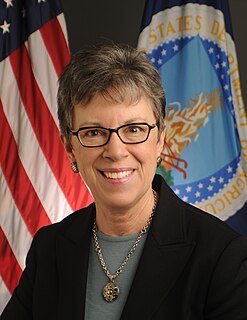
Catherine E. Woteki was the under secretary for United States Department of Agriculture's (USDA) Research, Education, and Economics (REE) mission area, as well as the department's chief scientist. Her responsibilities include oversight of the four agencies that comprise REE, the Agricultural Research Service (ARS), National Institute of Food and Agriculture (NIFA), Economic Research Service (ERS), and National Agricultural Statistics Service (NASS.) The National Agriculture Library and National Arboretum also fall under this mission area.
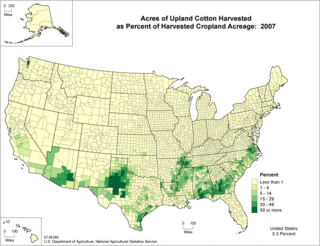
Cotton production is an important economic factor in the United States as the country leads, worldwide, in cotton exportation. The United States is ranked third in production, behind China and India. Almost all of the cotton fiber growth and production occurs in southern and western states, dominated by Texas, California, Arizona, Mississippi, Arkansas, and Louisiana. More than 99 percent of the cotton grown in the US is of the Upland variety, with the rest being American Pima. Cotton production is a $25 billion-per-year industry in the United States, employing over 200,000 people in total, as against growth of forty billion pounds a year from 77 million acres of land covering more than eighty countries. The final estimate of U.S. cotton production in 2012 was 17.31 million bales, with the corresponding figures for China and India being 35 million and 26.5 million bales, respectively.
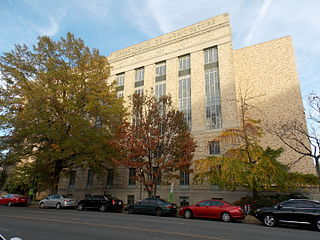
The U.S. Department of Agriculture Cotton Annex is an office building located at 300 12th Street SW in Washington, D.C. The size of the building has been variously given at 89,000 square feet and 118,000 square feet.
Cynthia Zang Facer Clark is an American statistician known for her work improving the quality of data in the Federal Statistical System of the United States, and especially in the National Agricultural Statistics Service. She has also served as the president of the Caucus for Women in Statistics and the Washington Statistical Society. As of 2018 she is executive director of the Council of Professional Associations on Federal Statistics.
















